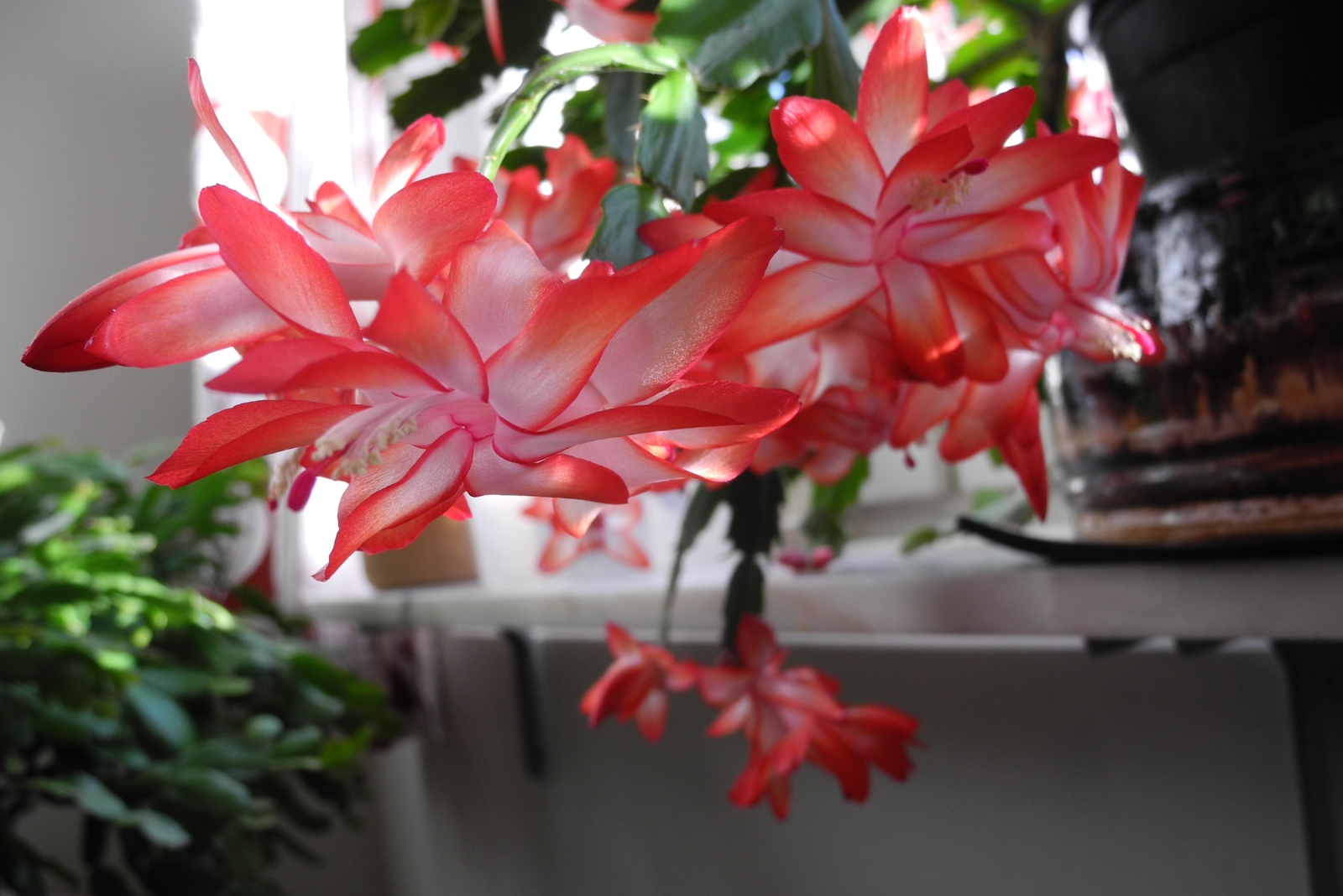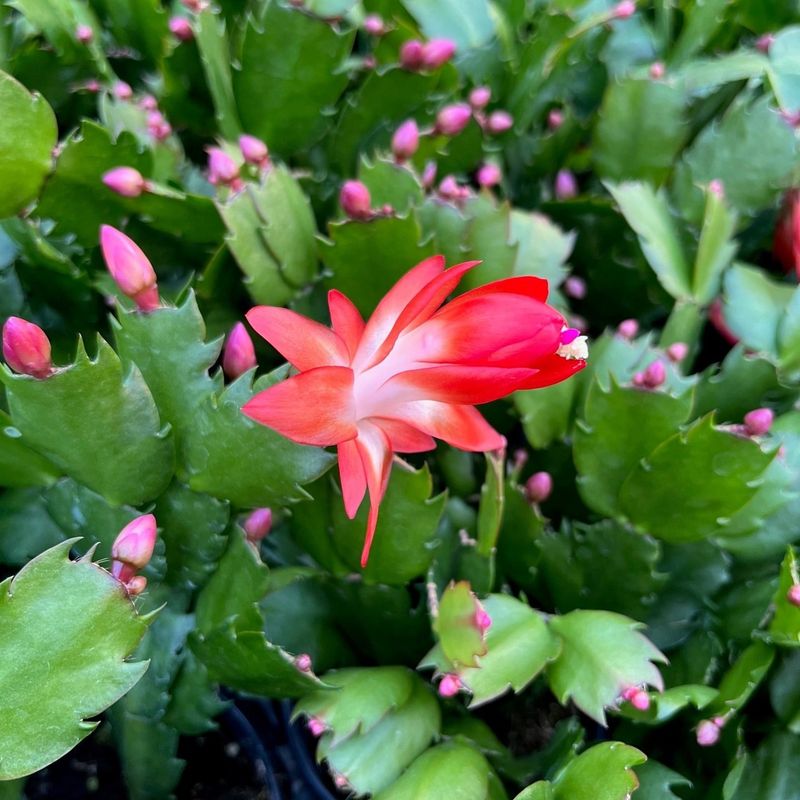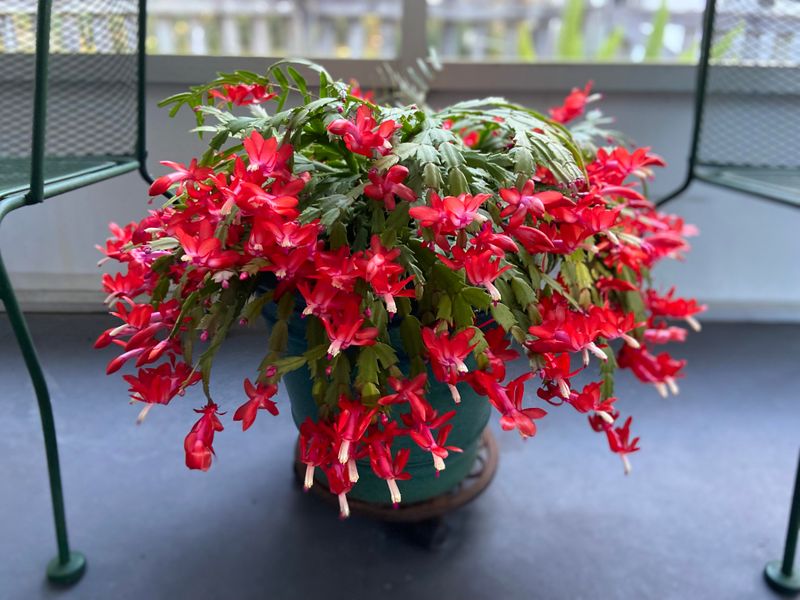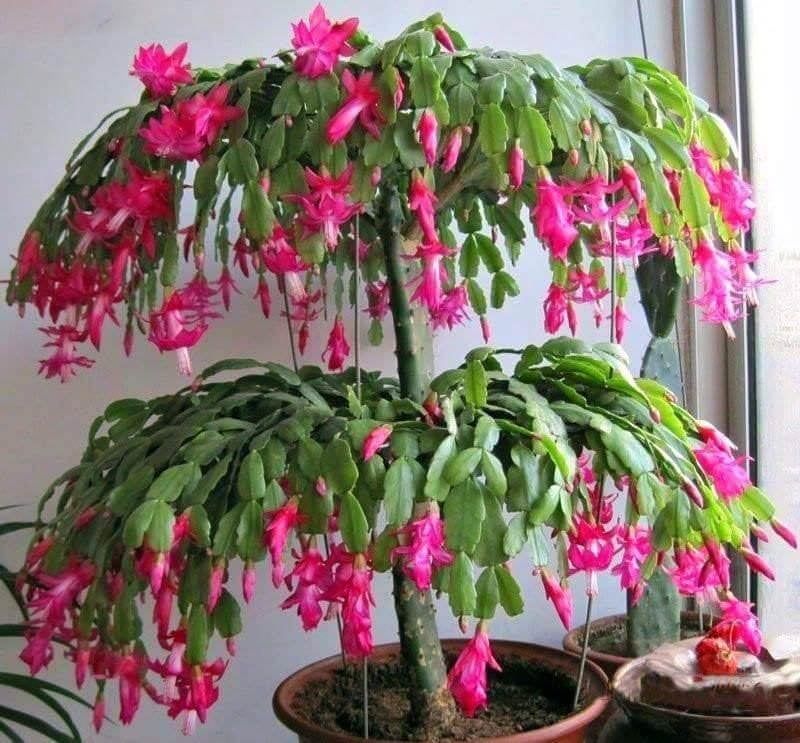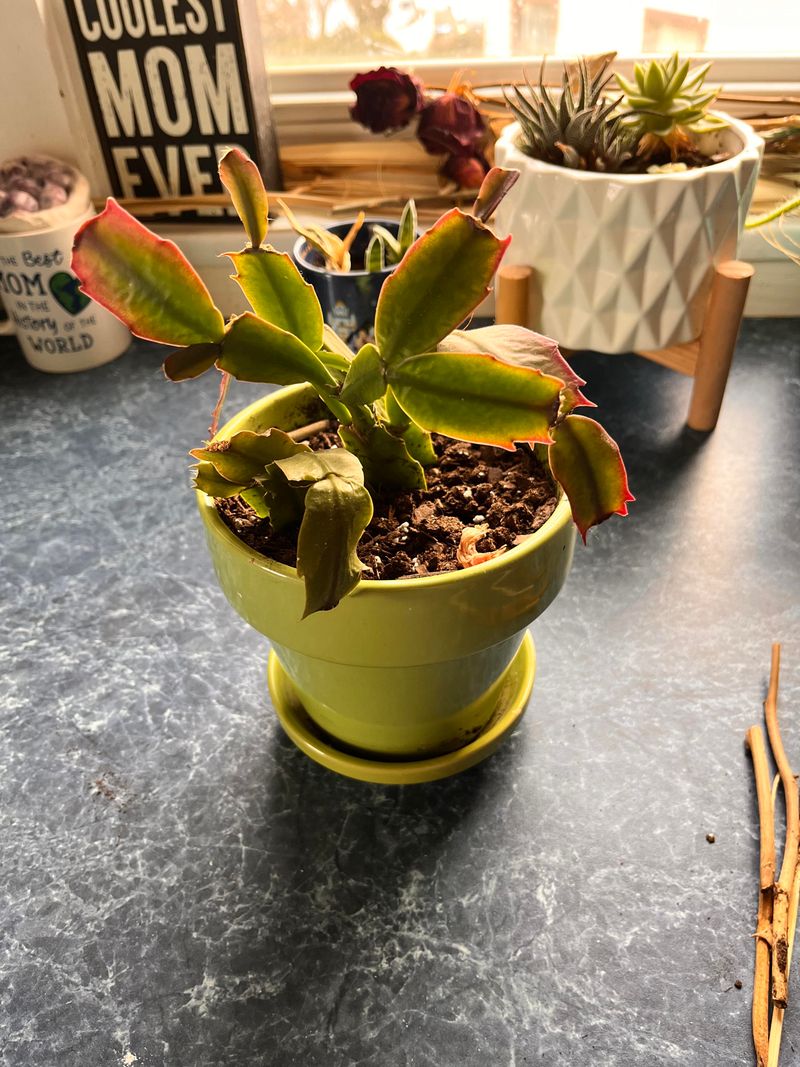A Christmas cactus doesn’t bloom on excitement alone. It blooms on cues: light, temperature, and the slow shift toward the holiday season.
Florida’s warm fall requires a bit of guiding hand, but get the timing right and the plant will reward you with bigger, brighter blooms than last year.
1. Give Your Plant The Right Amount Of Darkness
Christmas cacti are pretty picky about their light schedule when it’s time to bloom. They need about 12 to 14 hours of complete darkness each night for several weeks before flowering starts.
Florida’s longer daylight hours in fall can mess with this natural cycle. Try moving your plant to a dark closet or spare room each evening, or simply cover it with a box.
Keeping this routine going for six to eight weeks will trigger those buds to form and grow much larger than usual.
2. Water Less Frequently Starting In October
Cutting back on water might seem backwards, but it actually encourages bigger blooms. Your Christmas cactus needs a bit of stress to shift its energy toward flowering instead of growing leaves.
Starting in early October, water only when the top inch of soil feels completely dry to the touch. This usually means watering every 10 to 14 days instead of weekly.
Once buds appear, you can gradually return to normal watering, but never let the plant sit in soggy soil or the buds might drop off.
3. Feed With Bloom-Boosting Fertilizer
Not all plant food is created equal when you want spectacular flowers. Look for fertilizer with higher phosphorus numbers, which is the middle number on the package label.
Something like a 10-30-10 formula works wonderfully for encouraging larger, more vibrant blooms. Apply this special fertilizer every two weeks from September through early November in Florida.
Stop feeding once buds start showing color, since too much fertilizer at that point can actually cause them to drop before opening fully.
4. Keep Temperatures Cooler At Night
Temperature plays a huge role in bloom size and formation. Christmas cacti love when nights get cooler, ideally between 55 and 65 degrees Fahrenheit.
Lucky for Florida gardeners, November nights often hit this sweet spot naturally. Place your plant near a window that gets cool evening breezes, or keep it in an air-conditioned room at night.
The difference between day and night temperatures signals the plant that it’s time to produce those gorgeous, oversized flowers you’re after.
5. Avoid Moving The Plant Once Buds Form
Christmas cacti are surprisingly sensitive once they start developing buds. Moving them around your Florida home, even just rotating the pot, can shock the plant and cause bud drop.
Find the perfect spot early on and leave your cactus there throughout the entire blooming process. Even changes in light direction can confuse the plant and make it abort those precious buds.
Patience is key here, and your reward will be fuller, larger blooms that last for weeks instead of disappointing bare stems.
6. Maintain Proper Humidity Levels
Florida’s humidity can be a blessing and a curse for Christmas cacti. While these plants enjoy moisture in the air, indoor heating or air conditioning can dry things out quickly.
Aim for humidity levels around 50 to 60 percent for the healthiest, biggest blooms. You can achieve this by placing your pot on a tray filled with pebbles and water.
Misting the leaves lightly every few days also helps, but avoid spraying directly on buds or flowers since that can cause spotting or premature wilting.
7. Prune And Shape In Early Summer
Planning ahead makes all the difference when you want spectacular November blooms. Pinching back stems in June or July encourages your plant to branch out and create more flowering points.
Simply twist off one or two segments from each stem tip, which forces the plant to grow bushier rather than leggy. More branches mean more spots for those big, beautiful flowers to develop come fall.
Just remember to stop any pruning by August, giving your cactus plenty of time to recover and focus energy on bud formation.

